Hagia Sophia
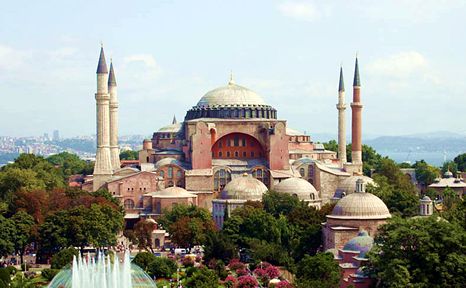
Renowned as one of the most beautiful buildings in the world, the spellbinding Byzantine glory of the Aya Sofya Museum (Hagia Sophia) is not only Istanbul's top sightseeing attraction, but also one of the top sites in Turkey. The staggering bulk of its exterior is rimmed by the delicate minarets added after the Ottoman conquest while the sumptuous and cavernous frescoed interior is a grand reminder of old Constantinople's might and power.
Ephesus
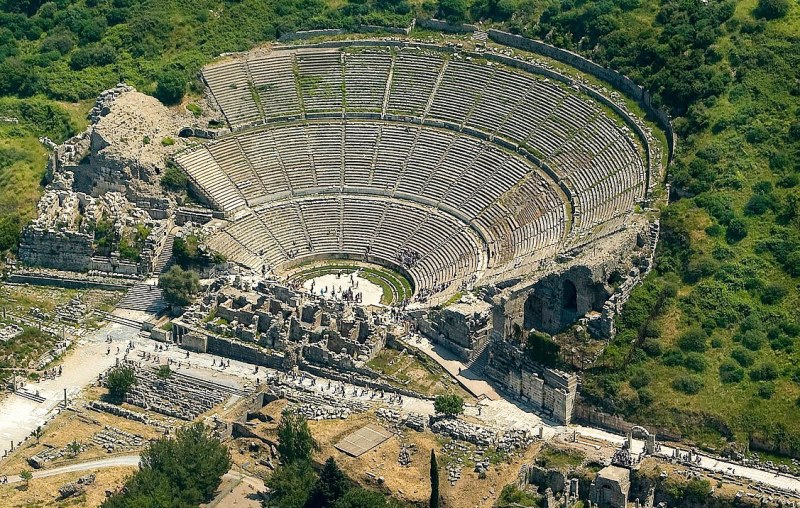
Turkey is awash with ancient cities, making it tough to select just one for this list. However, the most popular of these attractions is Ephesus near modern Selcuk. It contains some of the best preserved Greek and Roman ruins in the world and remains a well-trodden part of the tourist trail from nearby resorts such as Kusadasi and Izmir. Some of the most impressive attractions at Ephesus include the Library of Celsus, the Temple of Hadrian and the ancient theatre. Many visitors will explore this city in combination tours with Miletus, Didyma and Priene.
Cappadocia
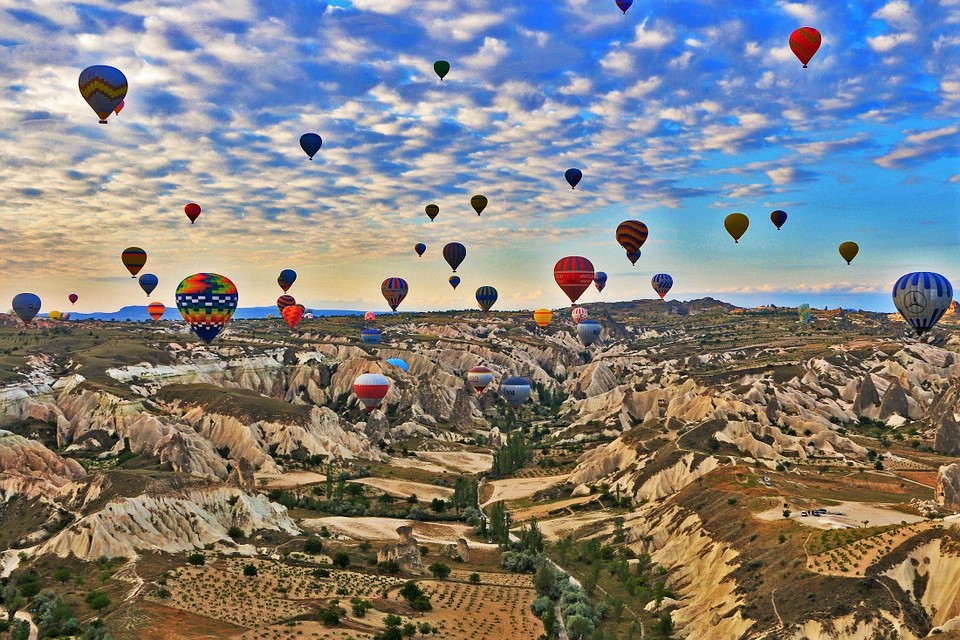
Among the most intriguing and fascinating tourist attractions of Turkey are the underground cities of Cappadocia. Built over a period spanning hundreds of years, the area now includes several such complexes many of which are now open to the public. The main tourist locations are the underground cities of Kaymakli, Derinkuyu, Ozkonak, Mazi and Urgup.
Topkapi Palace
The fifteenth century former residence of the Ottoman Sultans, the Topkapı Palace in Istanbul is a huge, ornate palatial compound which was a focal point of Istanbul’s social and political life for hundreds of years. A UNESCO World Heritage site, visitors flock through its gates to see its Ottoman architecture, courtyards and famous Muslim and Christian relics. A must see sight, it consistently ranks among the top attractions in Turkey.
Pamukkale
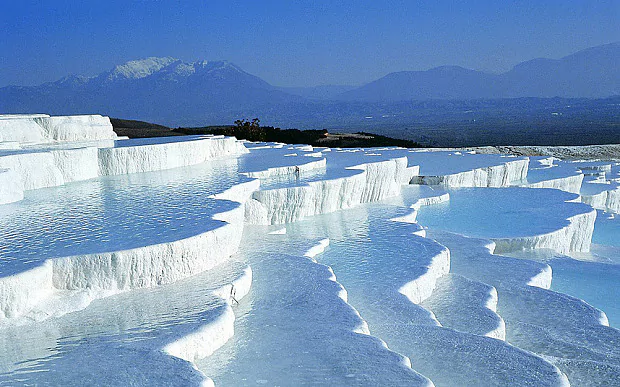
Pamukkale (means cotton castle) is located inland southeastern Aegean Turkey. These are a set of bizarre calcium cliff and bathing pools that is so beautiful. When you access there, you have to remove your shoes due to pollution control. In summer is quite hot, then don’t forget to bring your hat and sunglasses as well.
Sumela Monastery

The monastery was founded in AD 386 during the reign of the Emperor Theodosius I (375 - 395),[3] According to William Miller, Barnabas and Sophronios, two Athenian monks, founded the monastery. It became famous for an icon of the Virgin Mary known as the Panagia Gorgoepekoos, said to have been painted by the Apostle Luke. During its long history, the monastery fell into ruin several times and was restored by various emperors. During the 6th century, it was restored and enlarged by General Belisarius at the behest of Justinian.
Nemrut Mountain
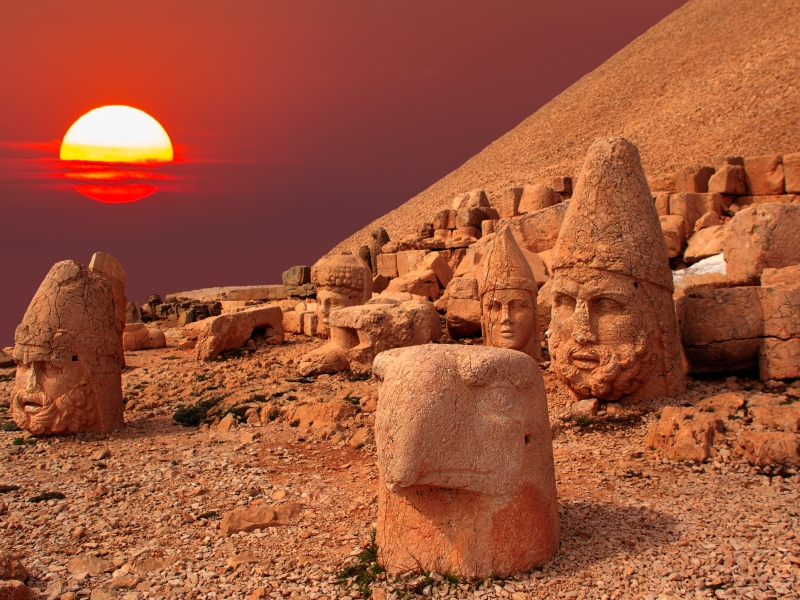
Nemrut or Nemrud (Turkish: Nemrut Dağı ) is a 2,134 m (7,001 ft) high mountain in southeastern Turkey, notable for the summit where a number of large statues are erected around what is assumed to be a royal tomb from the 1st century BC. The name is a relatively modern one, dating back to the Middle Ages. In Armenian legend, Hayk defeated the Biblical king Nimrod (equated with Bel) and buried him in these mountains. The conquering Arabs gave many ancient ruins they encountered the name Nimrud, including the famous Assyrian capital.
Pergamon
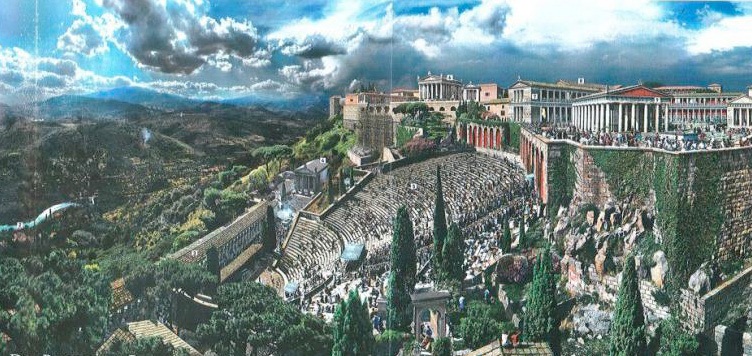
Pergamon or Pergamum was an ancient Greek
city in Aeolis, currently located 26 kilometres (16 mi) from the
Aegean Sea on a promontory on the north side of the river Caicus
(modern-day Bakırcay). Today, the main sites of ancient Pergamon
are to the north and west of the modern city of Bergama in
Turkey. Some ancient authors regarded it as a colony of the
Arcadians, but the various origin stories all belong to legend.
The Greek historians reconstructed a complete history for it due
to confusion with the distant Teuthrania. It became the capital
of the Kingdom of Pergamon during the Hellenistic period, under
the Attalid dynasty, 281–133 BC. Pergamon is cited in the Book
of Revelation as one of the seven churches of Asia.
Safranbolu Houses
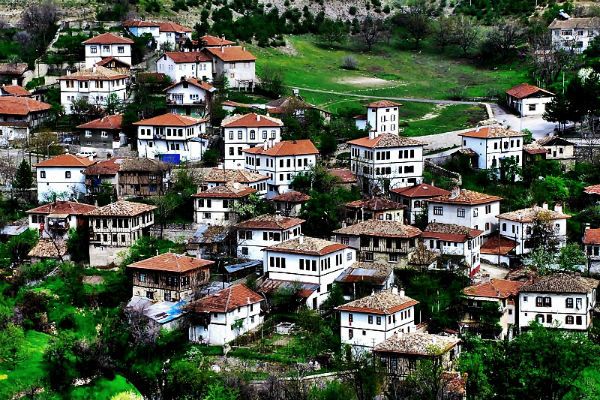
Hidden away in hill country, Safranbolu boasts a glorious collection of old Ottoman houses so beautifully preserved that it qualifies as a Unesco World Heritage site, on a par with Florence. It's a place to slow down and enjoy ambling along narrow cobbled lanes, observing traditional trades and crafts practised just as they were in Ottoman times. During the 17th century, the main Ottoman trade route between Gerede and the Black Sea coast passed through Safranbolu, bringing commerce, prominence and money to the town. During the 18th and 19th centuries Safranbolu's wealthy inhabitants built mansions of sun-dried mud bricks, wood and stucco, while the larger population of prosperous artisans built less impressive but similarly sturdy homes. Safranbolu owes its fame to the large numbers of these dwellings that have survived.